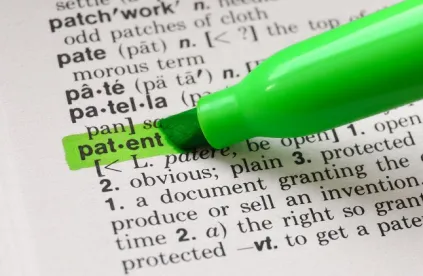The US Court of Appeals for the Federal Circuit vacated a final written decision of the Patent Trial & Appeal Board (Board) based on its finding that the Board erred in its ultimate claim construction by relying on extrinsic evidence that was inconsistent with the intrinsic evidence. Seabed Geosolutions (US) Inc. v. Magseis FF LLC, Case No. 20-1237 (Fed. Cir. Aug. 11, 2021) (Moore, C.J.)
In April 2018, Seabed Geosolutions petitioned for inter partes review of a patent owned by Magseis directed to “seismometers for use in seismic exploration.” Every claim recited a “geophone internally fixed within” either a “housing” or an “internal compartment” of a seismometer. The Board construed this limitation to require a non-gimbaled geophone based entirely on extrinsic evidence. The Board found that the term “fixed” had a special meaning of “non-gimbaled” at the time of the invention. Based on this finding, the Board determined that Seabed had failed to prove that the challenged claims were unpatentable because the cited prior art did not disclose a non-gimbaled geophone. Seabed appealed.
The Federal Circuit reversed the Board’s claim construction of the term “fixed” because it relied on extrinsic evidence that was inconsistent with the intrinsic evidence and unnecessary to consider given the clarity of the intrinsic evidence. The Court reminded the Board that it “resort[s] to extrinsic evidence to construe claims only if it is consistent with the intrinsic evidence,” and that “[i]f the meaning of a claim term is clear from the intrinsic evidence, there is no reason to resort to extrinsic evidence,” citing prior Federal Circuit decisions.
Contrary to the special meaning found by the Board, the Federal Circuit determined that the term “fixed” carried its ordinary meaning (i.e., attached or fastened). The Court found that the term “specifies the geophone’s relationship with the housing, not the type of geophone.” As an initial matter, the specification was silent as to whether the geophone was gimbaled or not. “That silence does not support reading the claims to exclude gimbaled geophones,” in part because the specification used the term gimbaled when describing other aspects of the invention. Had the applicant intended to limit the claimed geophone, it would have done so.
Furthermore, the specification described the internal mounting of the geophone as a key feature to overcome issues with the then-conventional method of separating the geophone from the seismometer’s other components. The specification reiterated that by internally mounting the geophone, the invention was “self-contained.” The prosecution history also revealed that both the applicant and examiner understood the term to carry its plain and ordinary meaning, equating “internally fixed within” with “disposed, and electrically connected, within.” That equivalence indicates that the term was intended to describe the relationship of the geophone with the seismometer, rather than to limit the type of geophone as contemplated by the Board. Accordingly, the Court found that the intrinsic record was clear, and that the Board’s reliance on extrinsic evidence—much less extrinsic evidence that was inconsistent with the specification itself—was improper and remanded for further proceedings based on its new construction.



 />i
/>i

